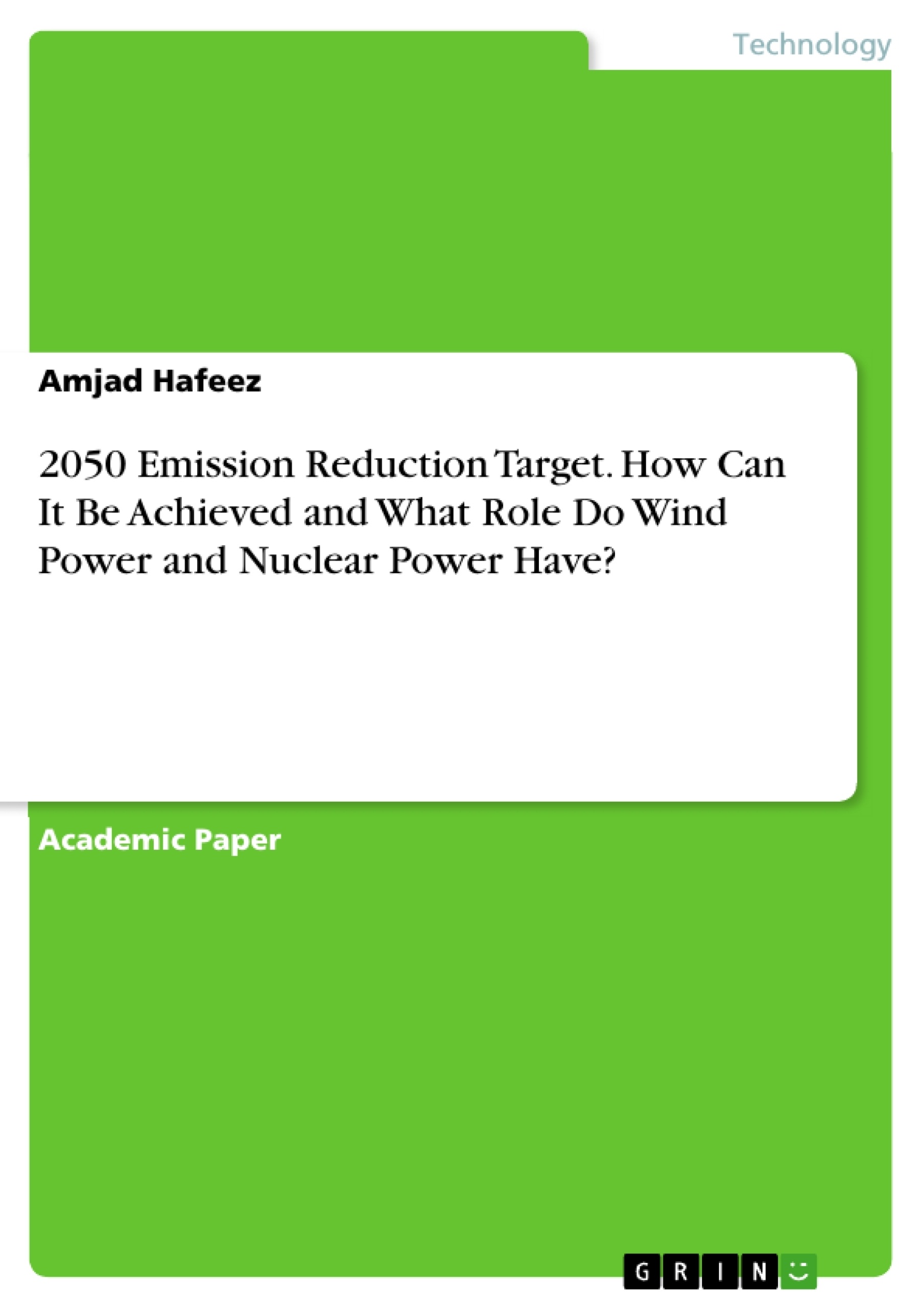The UK Climate Change Act 2008 has set 80% GHG emissions reduction target by 2050, relative to 1990 national GHG emissions. In this essay, DACC 2050 calculator has been used to devise a whole system scenario to assess the actions needed and possible energy mix needed to achieve 80% target by 2050. It has been concluded that for energy security, cost-effectiveness and achievement of 20250 target, wind power and nuclear power will have to play the key role.
In addition to that demand side management, through electrification of heat and transport, and energy efficiency will have to play a significant role. However, technological advancement in CCS, improvement in nuclear power flexibility in operation and geo-sequestration will influence 2050 target achievement.
Demand side management and demand reduction is very important in decarbonization of energy sector. One third of GHG reductions since 1990 are due to change in electricity mix, while two third are due to demand shift and energy efficiency. So, demand side carries considerable potential of GHG reductions.
Inhaltsverzeichnis (Table of Contents)
- COMBINATION OF NUCLEAR AND WIND POWER TO MEETING THE UK'S 2050 DECARBONIZATION TARGET
- IMPORTS
- POWER PLANT
- ELECRTRIFICATION PATHWAY
- SECTOR
- Final Energy Demand
- Electricity Demand
- Electricity Supply
Zielsetzung und Themenschwerpunkte (Objectives and Key Themes)
This essay explores a whole system scenario for achieving the UK's 80% greenhouse gas emissions reduction target by 2050, as set by the Climate Change Act 2008. Using the DECC 2050 calculator, the scenario focuses on energy security, cost-effectiveness, and achieving the 2050 target.
- Decarbonizing the electricity sector
- Electrification of heating and transport sectors
- Utilizing renewable energy sources, nuclear power, and carbon capture and storage (CCS)
- Managing energy demand through efficiency and shift
- Addressing affordability and energy security concerns
Zusammenfassung der Kapitel (Chapter Summaries)
The essay begins by outlining the UK's commitment to reducing greenhouse gas emissions by 80% by 2050. It then presents a detailed scenario for achieving this target, encompassing energy supply and demand sides. The proposed pathway relies heavily on nuclear power, wind energy, and CCS to decarbonize the electricity sector. The essay emphasizes the importance of demand side management through electrification of heating and transportation, as well as energy efficiency.
The scenario includes detailed projections for primary energy supply, final energy demand, electricity generation, and consumption, along with source and sector breakdowns. The essay also discusses the role of fossil fuels in the proposed energy mix, particularly in combination with CCS technology for heavy transport. The scenario incorporates a significant level of energy imports, highlighting the importance of energy security.
The essay further delves into the implications of the proposed scenario on affordability, providing cost projections for various energy sources and highlighting the potential cost savings associated with low-cost and environmentally friendly energy in the future. The essay concludes by discussing the role of demand side management in achieving the 2050 target, emphasizing the importance of reducing energy demand and improving energy efficiency.
Schlüsselwörter (Keywords)
This essay focuses on the combination of nuclear and wind power to meet the UK's 2050 decarbonization target. It explores key themes such as energy security, cost-effectiveness, demand side management, and the role of renewable energy, nuclear power, and CCS in achieving the target. The essay utilizes the DECC 2050 calculator for scenario modeling and draws on various research findings and projections. The essay also highlights the importance of addressing affordability concerns related to energy transition.
- Citation du texte
- Amjad Hafeez (Auteur), 2019, 2050 Emission Reduction Target. How Can It Be Achieved and What Role Do Wind Power and Nuclear Power Have?, Munich, GRIN Verlag, https://www.grin.com/document/462662



